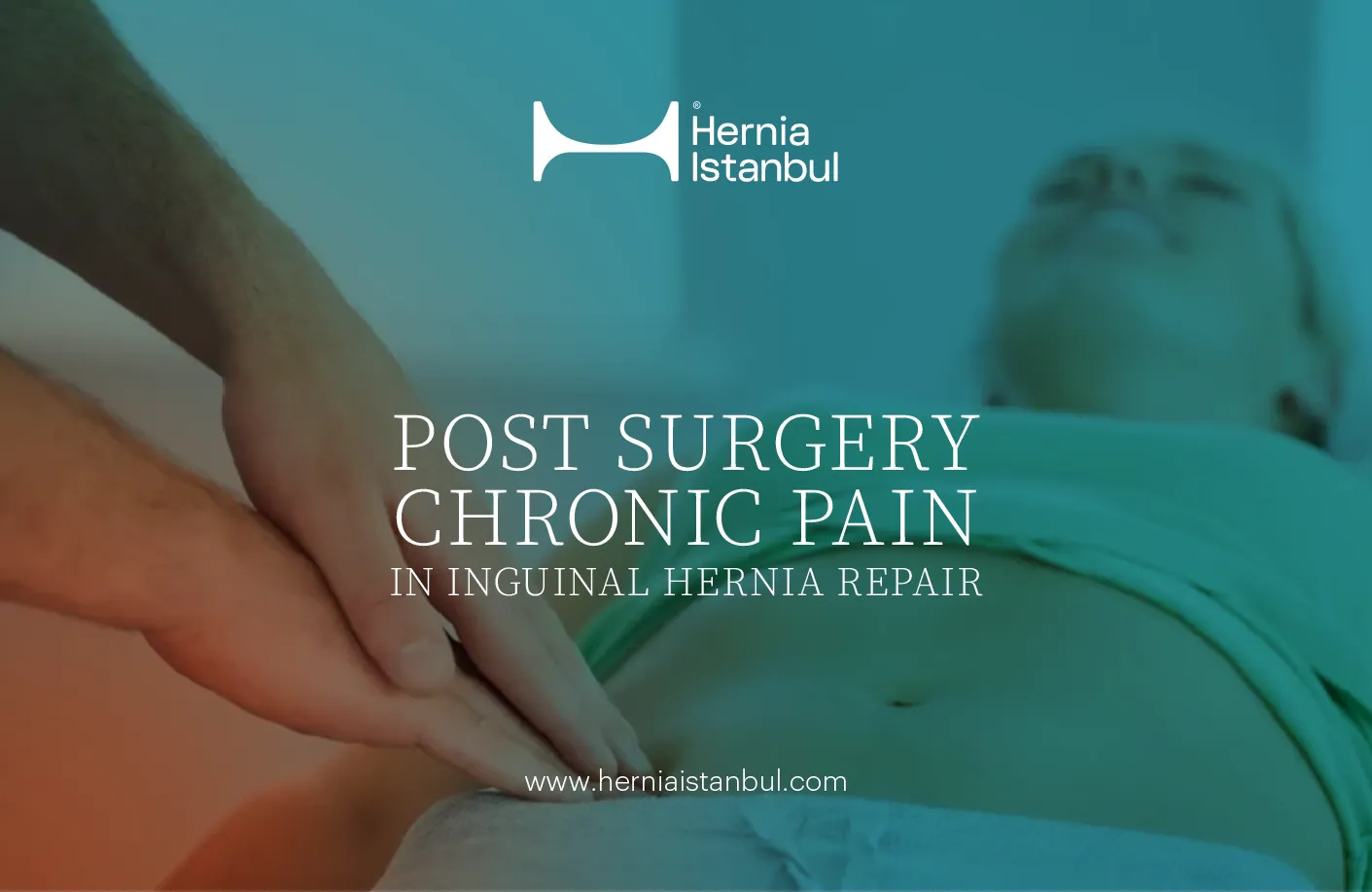
11 Apr 2023 Chronic Pain after Inguinal Hernia Surgery
Patients with chronic pain after inguinal hernia surgery are often not given the option to undergo additional surgery. Although additional surgery is not the right choice for everyone, mesh removal and/or neurectomy procedures can provide significant or complete relief from chronic pain.
When you have surgery for a painful inguinal hernia, you can expect the surgery to relieve your pain. For most patients, the pain disappears, but for some, groin pain can last for months or even years after surgery.
Inguinal hernia repair is one of the most common surgical procedures performed. Most patients return to their daily lives and work shortly after the surgery. However, some patients experience chronic groin pain postoperatively. We consider pain that lasts more than 3 months after surgery to be chronic. The pain can last for months and is sometimes debilitating. It can cause problems such as difficulty sitting, getting up, and walking.
Whether open or laparoscopic, the surgeon will place a synthetic mesh to reinforce the hernia area. Pain may occur when a hernia recurs. When a hernia recurs, there is swelling, but sometimes this swelling may not be detected by examination, and the recurrence may only manifest itself with pain. In this case, it is necessary to investigate with an imaging method (Ultrasound, CT, MRI) in addition to examination.
One of the most common reasons for pain after inguinal hernia surgery is nerve damage that occurred during the operation. Although this problem is more common in open surgery, it can also occur after laparoscopic surgery, particularly after fixation. Other causes may include tissue inflammation due to surgery, tissue damage, or the body’s response to the mesh.
What can you do? If you have had inguinal hernia surgery and still have pain three months later, it is time to talk to your doctor. The surgeon will consider all treatment options to alleviate pain. These options may include the following.
• Pain management with medication or local anesthetic injections.
• PRP injections. Injecting a plasma-rich protein complex promotes healing and alleviates nerve pain.
• Nerve ablation. Treating nerve pain using electrical currents.
• Neurectomy. Surgical removal of the injured nerve(s).
• Surgical removal of the mesh.
• Neurectomy performed in conjunction with mesh removal.
Although medication, local anesthetic injections, or PRP injections may help reduce pain, they do not eliminate the underlying cause. Patients often experience chronic pain after hernia surgery, and surgery may not always be an option for these patients. Although additional surgery is not the right choice for everyone, mesh removal and/or neurectomy procedures can provide significant or complete relief from chronic pain.
Our approach is to evaluate patients with chronic pain after inguinal hernia surgery using the following steps:
• Detailed history-taking
• Review of old reports
• Physical examination
• Pain Mapping Test
• Radiological examination
• Treatment planning
Understanding the patient’s complaint and the processes that started with hernia surgery is crucial for understanding the problem. We would like to review the reports related to your surgery. You should try to obtain them.
After a detailed physical examination, we perform a Pain Mapping Test to determine the type and source of pain. This test, which is practical and quick to perform, provides crucial information.
Based on these findings, we decide whether to perform radiological examinations and, if so, choose between ultrasound, CT, or MRI.
Once these processes have been completed, we plan the treatment and share it with the patient in detail.
In conclusion, determining which treatments patients will respond to through a collaborative approach with pain management and a disciplined team is the best approach. If you have talked to your surgeon about your options for getting rid of chronic pain and still feel uneasy, it may be time to consider seeking a specialist.
You do not have to live with pain; consider getting a second opinion if necessary.